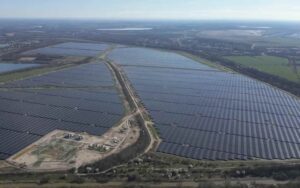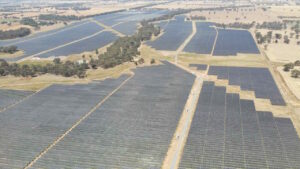The solar and wind industries around the world and in Australia are bracing for the impact of devastating coronavirus in China, which has brought some manufacturing to a halt and is likely to result in price rises and potentially supply shortages and project delays.
Solar installers in Australia have already been warned that they face delays in the delivery of key products, including solar modules, inverters and other hardware due to the virus.
Tirone Kahn, COO and head of strategic procurement at Todae Solar, says he has received some notifications from suppliers – across the board – about potential delays.
They are still trying to engage the extent of the problem, but price rises and potential delays to projects – both small and large – appear inevitable for an industry already dealing with connection bottlenecks and other issues. Around 90 per cent of the solar modules installed on Australia rooftops, for instance, are manufactured in China, according to data from SunWiz.
The impact of the China coronavirus – which has now claimed more than 490 dead and surged to more than 23,600 confirmed cases in China alone – is leading to widespread travel bans both within, and to and from China, and the closure – or enforced extended China New Year holidays – of key manufacturing facilities.
The coronavirus has already had an impact on key commodities such as iron ore and oil – both have fallen significantly in recent days – and Tesla has warned of potential production delays at its new Shanghai gigafactory.
The restrictions on travel, and the extension to Chinese new Year holidays are impacting several key provinces and regions in China that are a centre for solar module and inverter manufacturing, such as Shanghai, Zhejian, Jiangu, Fujian and Guangdong.
Recharge reported that the Chinese solar PV sector has already asked for an easing of grid-connection deadlines in the face of the coronavirus emergency, according to analysts at Azure Capital, which described the coronavirus as a “stab in the wound” to the renewables industry.
“Many provinces and regions such as Shanghai, Guangdong, Jiangsu, Fujian and Zhejiang where wind power equipment manufacturing and offshore wind power projects are concentrated have further postponed the return to work to after 9 February,” said Azure in a note.
According to Recharge, the Chinese government might decide to ease construction deadlines for wind and solar projects as the coronavirus plays havoc with their plans.
“Developers are racing to meet tight project completion deadlines in 2020 and 2021 ahead of expiry of government support arrangements in onshore wind and PV, and offshore wind,” it said.
“Late returns to work after the new year holidays and travel restrictions will make it “significantly harder” to meet the goals.” It also noted that global wind energy giants Vestas and Orsted had placed travel restrictions on their staff.
It has also emerged that one key industry player – Yang Jun, a former vice president of solar giant Trina and lately with Shanghai Electric – has been identified as the first reported death from the coronavirus in Beijing. He had earlier visited Wuhan, the epicentre of the virus, on a business trip.
Analysts at Wood McKenzie say the coronovirus is likely to impact the Chinese-rooted solar energy supply chain, leading to labor shortages, equipment delays and global price increases.
“At this point, this is still early in the development of the epidemic, and many different scenarios could play out,” Xiaojing Sun, a senior solar analyst at Wood Mackenzie Power & Renewables, told Greentech Media. “It’s still very fluid.”
Because the virus’ rise occurred during the Chinese Lunar New Year, the Chinese government extended the holiday to prevent its spread. Work shutdowns continue at several module manufacturers, and production is unlikely to start back up again until well into February.
The article quoted a note from Roth Capital Partners said manufacturing restrictions in Jiangsu, Zhejiang and Anhui provinces could impact companies including Trina, Hanwha Q Cells, JA Solar and Enphase that have manufacturing facilities in those locales.
“[Southeast Asian] module manufacturers to a large extent rely on Chinese suppliers for things like backsheets, frames, junction boxes,” said Sun. “If there is a long hold on those in China, their module assembly capacity may eventually be affected.”
“They may not have enough inventory to carry them through if production is not able to resume in China until early March.” If manufacturing resumes in the short term, then the impact may be short lived.
PV Magazine quoted officials from several big Chinese solar manufacturers as saying their factories are operating at very low rates and they do not anticipate a return to normal production in the immediate future.









